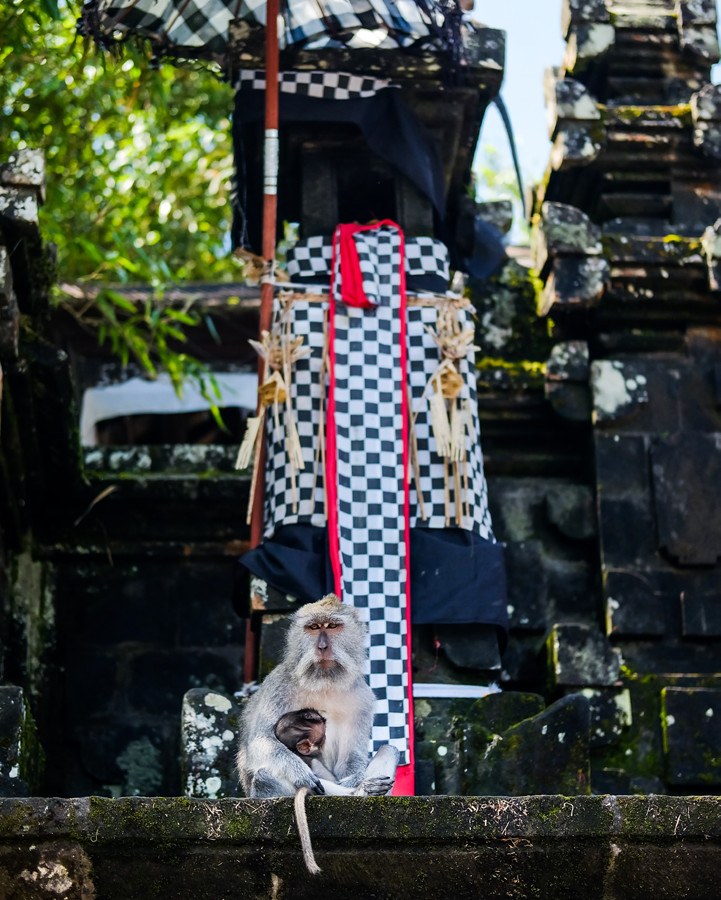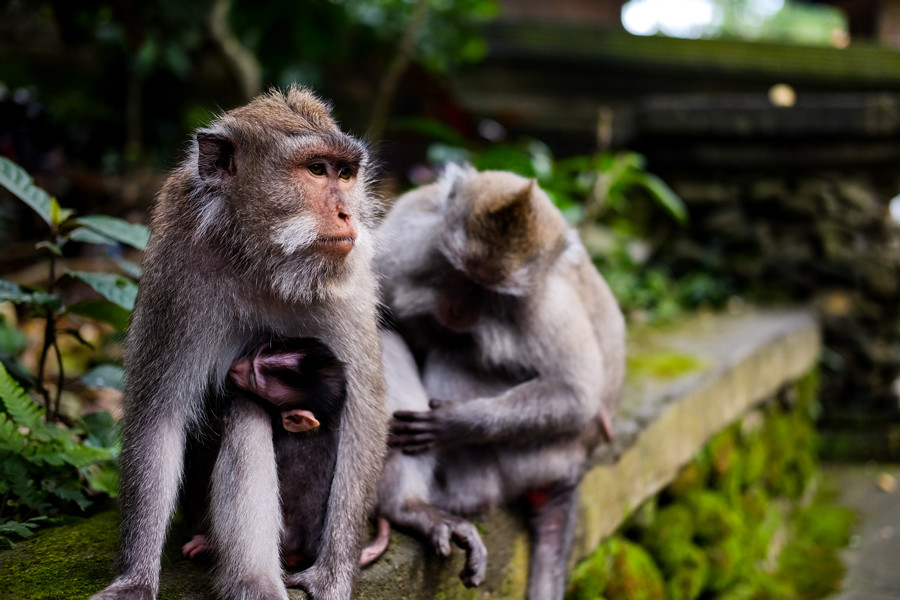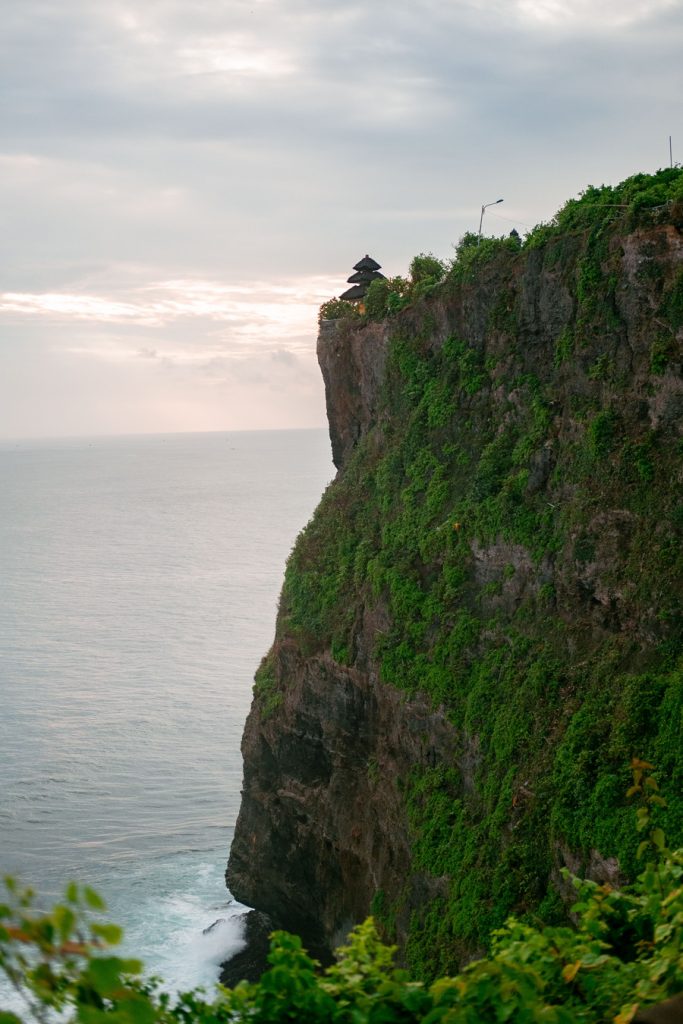Pura Luhur Uluwatu is notoriously inhabited by long-tail macaques. Legend has it, these indigenous monkeys were once brave warriors to the Hindu high-priest who built the temple. Behind the tourist charm of the sea temple lie stories that may remain as myths.

Perched on the edge of a limestone cliff jutting into the Indian Ocean, Pura Luhur Uluwatu or the Uluwatu Temple is one of the oldest of its kind. Luhur can be translated to ‘something of divine origin’, whilst ‘ulu’ means ‘land’s end’ and ‘watu’ is ‘rock’ in Balinese old language. It’s one of the nine chief temples (Pura Kahyangan Jagat) of Bali that protects the island from evil spirits. It certainly captivates visitors for its spiritual history and value, but also the daily Kecak dance performed against a wonderful sunset backdrop entertains millions of eyes each year.
Though saltwater waves hit the steep stone hills as naturally as the sun rises, the rock platform miraculously never erodes. The temple has been standing gracefully for centuries without intrusion. This majestic rock where the temple resides is believed to be Dewi Danu’s petrified barque. Perhaps, it retains the blessings from the goddess of water.
But the most endearing of all is the story of Danghyang Nirartha — and his soldiers.
Danghyang Nirartha is a prominent spiritual figure hailing from East Java during the Majapahit Kingdom. He built Uluwatu Temple from the ground up; and many, too, believe he constructed other iconic temples such as Tanah Lot.
Recorded in Balinese history around the year 1489 AD, Brahmin Danghyang Nirartha reached Bali with a solemn task in hand. He married the daughter of a noble family in Daha, East Java, where he studied and received diksa (blessing) from the family. Upon being awarded a kawikon (proverbial) title, he went by the name Danghyang Dwijendra and endeavoured to carry out his dharmayatra (a kind of pilgrimage) on the island of Bali.
During his time on the island of the gods, among other spiritual accomplishments, he took on the role of King Gelgel’s (of Dalem Waturenggong) right hand and went on to become the architectural pioneer of padmasana temples — the ones we see in Bali today.
His sacred creation, the Uluwatu temple, became his resting place where he spent the remaining days before subverting. Here he attained moksha (a state of being in ultimate liberation); as the Balinese would call ngeluhur (to rise). This nirvana moment led to the temple’s epithet ‘Pura Luhur’ (divine temple), and the hallowed status of the temple as a reminder for Balinese Hindu to desire the same purpose.

The high priest, during his repose in the temple, was accompanied by an army of loyal soldiers who helped nurture peace and safety within the holy grounds. Before his passing, he transformed his brave warriors into a horde of monkeys, who had made a sacred oath to guard the temple. Not only have they settled in the cliffside temple but these monkeys are said to divinely protect it. One will also see a Danghyang Dwijendra statue erected in the temple to pay respect to the respected Hindu hero.










